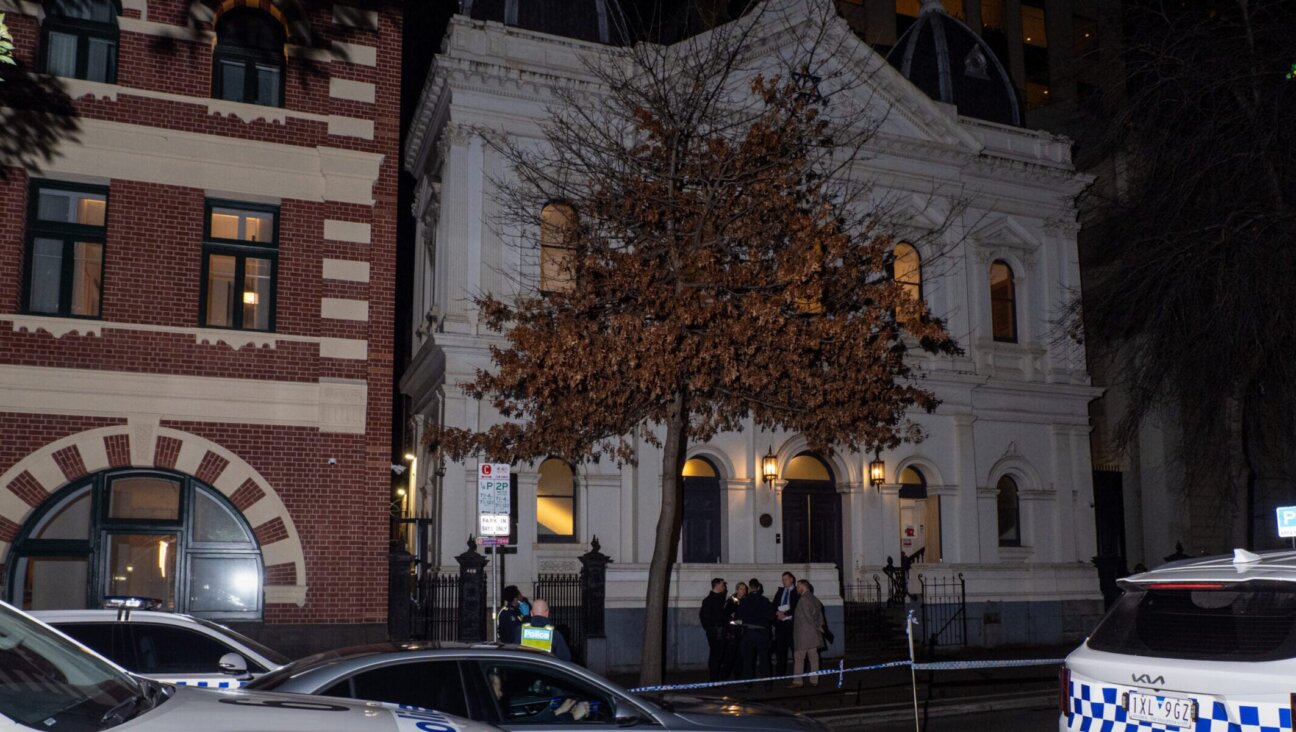Mystical Gardening and Digital Art

Graphic by Angelie Zaslavsky
Growing up in central New Jersey in the early 1950s, Allen Hirsh knew virtually nothing about Judaism as a religion. “My family was rather typical of the community: extremely left-wing labor Zionists,” he said of his parents, who spoke Yiddish at least half of the time in the house. Hirsh’s father, a chicken farmer-turned-landscaper, went to kheyder for 11 years and “was considered a Yiddish language scholar by other farmers,” Hirsh said. His father, he notes, took several “extended trips” to Israel during the Suez crisis “to help build the fledgling chicken industry at Kibbutz Gesher HaZiv in northern Israel.”
As a young adult, though, Hirsh, a Silver Spring, Maryland-based biophysicist and artist, turned to his faith. After what he describes as a “tumultuous period” in his life as a neurophysiology graduate student at Columbia University, he studied Jewish mysticism as part of what he calls “my teshuvah.”
“It has long sat in the background of my life,” he said, “but its rich concepts of an infinite God are compatible with my theological, artistic, and scientific instincts.”
Those instincts, honed at Caltech prior to Columbia and in a doctoral program in plant physiology at the University of Maryland, College Park, have led Hirsh down a rare path. The self-declared “abstract gardener” — whose digital print “Early in the Big Bang” is on display in the exhibit “Fireworks” (through July 27) at Washington’s Foundry Gallery — maintains an exotic garden.
“I began experimenting with exotic plants in my parents’ nursery when I was 12,” he said. His parents, who pioneered the import of California plants to the East Coast, gave him “virtual free reign to try anything,” including palms, eucalyptus, monkey puzzles, and Mexican oranges, he said. “You name it, I tried it. That type of gardening has never departed my heart.”
Today — despite the “evil winter” that just passed — Hirsh’s garden contains cacti, bananas, century plants, jasmine, passionflowers, and tree yuccas. Although he admits it’s a “not weeded enough little arboretum.”
Hirsh generates his digital images using mathematical formulas. “My philosophy of Digital Art is that it represents another form of painting,” he writes on his website. “Instead of using brush and paint and canvas, the digital artist uses the virtual easel of the screen and the tools available to manipulate bitmap files (Adobe Photoshop, Painter, etc.) to construct the image he or she is imagining.”
In an interview with the Forward, Hirsh explained that there is a perception that it’s easier to make digital art than “fine” art, which, he says, stems from “widespread disdain” for photography as an art form. “The advent of powerful digital manipulation programs, such as Photoshop and Painter, has only sharpened the debate by allowing the digital artist to create complex visual effects by the click of a mouse,” he said.
The gap is narrowing, he believes, as digital artists rethink their tools, as traditional artists further investigate multimedia paths. “This has produced an almost continuous spectrum of style from pure photography to pure painting, and the resulting mélange literally bubbles with creativity,” he said.
Hirsh’s own blend owes a lot to the kabbalists and Jewish mysticism, which he calls the best analogy for his art. “They say that there are infinite layers of meaning that are hidden in the Torah … such that, by expanding each Hebrew letter into its name repeatedly, one can create an endlessly expanding text and here and there a new cosmic insight will emerge … That is somewhat analogous to what I do with my tools as a digital artist.”























